FBR Then and Now: An interview by Cynthia Nalevanko
As we close out the year, we are pleased to feature an interview conducted by SAGE editor Cynthia Nalevanko, demonstrating the growth of FBR over the years and its increase in ratings and rankings. Below is her interview with former editors Ivan Lansberg and Kelin Gersick, current editor Pramodita Sharma and FFI president Judy Green.
Yours in Practice,
The Practitioner
Family Business Review (FBR) is currently in the 28th volume and considered a well-established journal. For the past two years it has been ranked #4 out of 115 journals in the Business Category of the Thomson-Reuters Journal Citation Reports. Since 2010, it has received more than 200 manuscripts from scholars all over the world. Full-text downloads of the articles regularly reach more than 100,000 downloads every year.
Kelin Gersick and Ivan Lansberg edited the journal during the critical first five years (1988-1993), followed by Max Wortman Jr. (1993-1995) and Joseph Astrachan (1995-2008). Pramodita Sharma is the current editor of FBR, and Judy Green is president of the Family Firm Institute, owner of the journal. I recently sat down with Ivan, Kelin, Dita and Judy to talk about how the journal and research on family enterprise has changed over the years.
Cynthia Nalevanko (CN): Why was it important to have a professional journal in an emerging field?
Ivan Lansberg (IL) and Kelin Gersick (KG): FBR was conceived as an integral part of a strategy to launch FFI and to jumpstart the field. The original founding group (Dick Beckhard, Elaine Kepner, Barbara Hollander (the first president of FFI), Ivan Lansberg, Aaron Levinson, and George Raymond) felt strongly that even though professional practice would be the driving force integrating this new field, generating and disseminating new knowledge about family enterprise was also essential to the long-term viability of the collaborative effort. The field needed to build credibility with multiple constituents from the behavioral and social sciences, balancing the consultants’ approach to family businesses as “clients” with the academics’ view of them as “organizational phenomena.” A journal was seen as the most effective tool for nurturing research and new learning. Dick Beckhard was very much the lead instigator of that idea, based on his experience launching the OD field.
CN: How was FBR created?
IL/KG: Dick and Ivan went to meet with Lynn Luckow, a leading editor at Jossey-Bass in San Francisco, to sell him on the idea of a journal for a new field. Lynn agreed that it was an interesting idea and asked Ivan to write a proposal for the new journal.
IL: “This was the most fun: to face a blank page and to imagine what the sections of the journal would actually look like. It was evident at the start that one of the challenges was going to be how to generate enough articles to keep a quarterly journal going. I was fresh out of graduate school then and tried to cast a wide net but learned early on that getting those in my limited network to write would be a complicated task. In many cases there was a series of steps for each article: recruiting the interest of colleagues, some of whom were not used to sharing their ideas or experiences in this format; pushing against the rigid timetable of publishing; significant rewriting and editing; and then making tough decisions about accepting or rejecting efforts from people who were close friends and colleagues. It was a challenge…”
IL/KG: There were some (not too many) articles already published in other journals about the topic. The “Classics” section helped fill the pages (and had the corollary benefit of channeling already existing knowledge into the field). The interview section served a similar purpose (roping in recognizable and established thought leaders from various disciplines who could contribute their insights to FBR without having to invest a lot of time writing fresh articles). Finally, the book reviews were intended to begin building a canon of literature for the field. All together, these sections and the small number of new articles made a credibly sized quarterly publication.
CN: How did FBR evolve in those early years?
IL/KG: The biggest problem was the supply of publishable articles. The academics we could approach to write didn’t know much about family companies and the professionals who understood the issues didn’t know how to write in this style. The workload was much more than expected. Ivan was also worried about spending so much time on an activity that he had been warned would not help much with his tenure review at the Yale School of Management. So he asked Kelin to join him as co-editor and to oversee a set of topical issues.
The topical issues helped with some problems: They made the “ask” easier to colleagues who had particular expertise, and they allowed us to greatly expand the domain of the emerging field beyond the traditional succession-based topics that made up most of the unsolicited submissions. They also created their own set of problems: finding the experts, coordinating the topics, dealing with possible redundancies across articles, and convincing skeptical readers that topics like health, women, philanthropy, ethnicity, and international perspectives were as legitimate for our field as succession planning.
In summary, for those first five years, the key editorial issues were: 1) stimulating submissions; 2) balancing the “voice” of the journal so it would serve a broad audience of academics, practitioners and family business owners; 3) finding authors who could write well about relevant issues; 4) mapping out key content areas when we were just beginning to understand the issues ourselves; 5) internationalizing the effort so the content of the journal would do justice to the wealth of diversity of family enterprise across cultures; and 6) learning to manage the mechanics of the journal, including deadlines, the flow of manuscripts, building the editorial board, participating in promotional events at conferences to awaken interest in the journal. The whole thing was quite entrepreneurial and messy — exhausting but lots of fun.
CN: What are some of the seminal articles that have been published in FBR which have advanced research on family enterprise?
Pramodita Sharma (PS): The top five most cited and influential articles from FBR for many years are:
- A Resource-Based Framework for Assessing the Strategic Advantages of Family Firms by Timothy Habbershon and Mary Williams (March 1999)
- The Succession Conspiracy by Ivan Lansberg (June 1988)
- An Overview of the Field of Family Business Studies: Current Status and Directions for the Future by Pramodita Sharma (March 2004)
- Bivalent Attributes of the Family Firm by Renato Tagiuri and John Davis (June 1996)
- Myths and Realities: Family Businesses’ Contribution to the US Economy — A Framework for Assessing Family Business Statistics by Melissa Carey Shanker andJoseph H. Astrachan (June 1996)
CN: In 2007, FBR received its first Impact Factor of 0.675 which put it #49 out of 72 journals. This year, the Impact Factor is 5.528 and it is ranked #4 out of 115. Prior to these last two years, the journal was ranked in the Top 20 journals in the business category. Additionally, we have seen dramatic growth in the numbers of readers downloading articles from 50,000 downloads in 2009 to over 100,000 downloads in 2014. To what do you attribute this growth?
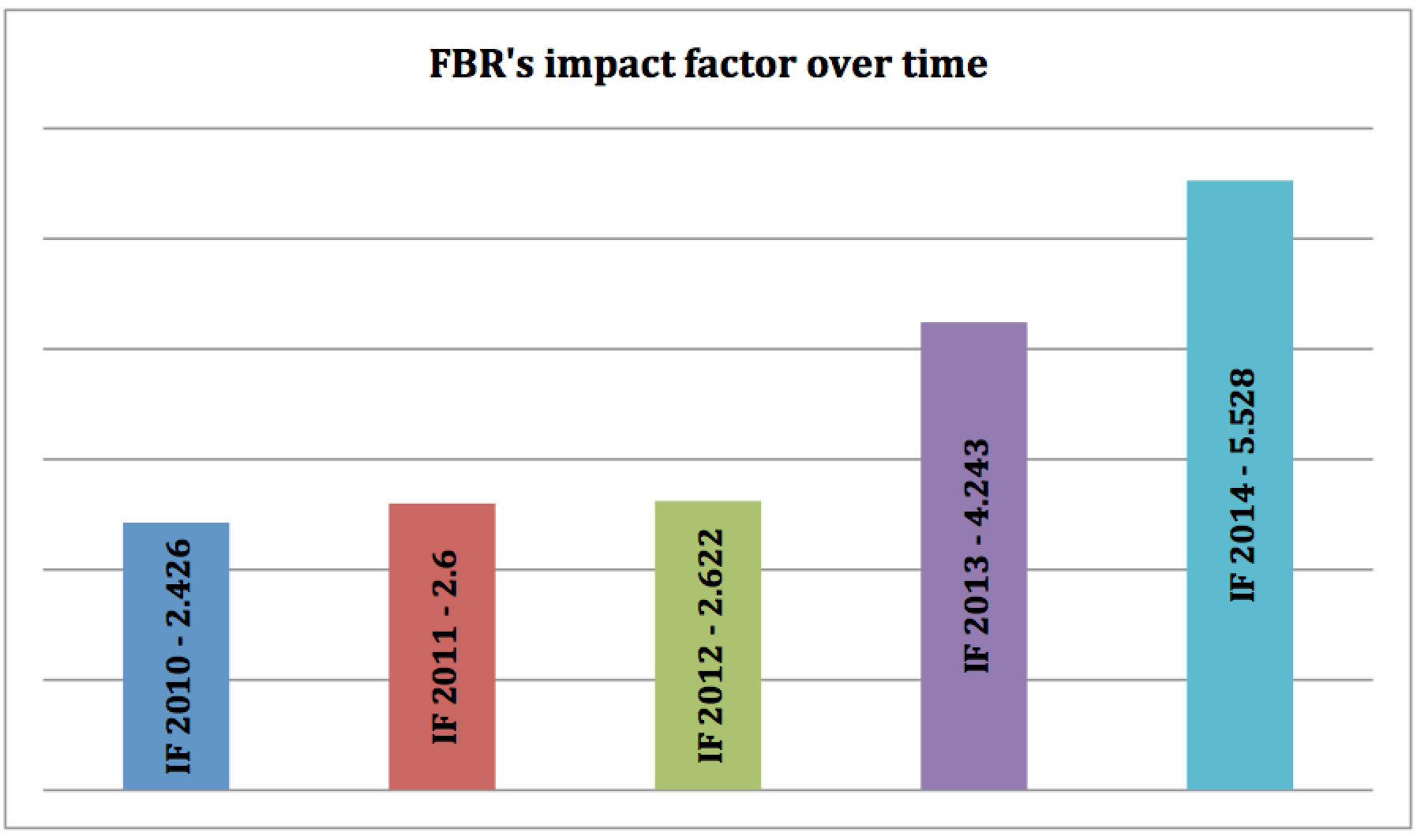
PS: A collective effort from scholars — authors, reviewers, and editors — to build the rigor, reach, and relevance of research on family businesses.
Thanks to research first published in FBR, an increasing number of scholars from around the world are realizing that family enterprises are the dominant form of organization. These are distinct entities with their unique issues and offer interesting venues to explore diverse and complex phenomenon of interest.
FBR has not increased its size since its inception in 1988 when it started out with four issues per year and continues in this way today. Depending on the length of articles, each volume ends up with about twenty articles. So, while the number of submissions has increased dramatically, the number of articles published has not. Thus, editors and reviewers have more to select from, which raises the expectations of rigor. In turn, enhanced rigor attracts more serious scholars toward the journal. The positive cycle continues, which helps increase the Impact Factor (IF). Many universities around the world encourage their researchers to publish in high IF journals. For FBR, this means more submissions and the cycle continues.
In other words:
More submissions – Less space – High rigor in published research – Journal becomes attractive for strong scholars to read and publish in – Strong papers raise citations – High citation helps increase the Impact Factor ……… back to more submissions.
We have come a long way since FBR’s first issue in 1988. While Ivan and Kelin had to contend with a small number of publishable articles, with an acceptance rate of 7-8%, our big challenge is to cull out the best articles to publish in FBR. And, while the founding editors had to do “painful arm-twisting” of colleagues to develop manuscripts for FBR, provide thoughtful reviews, and revise the papers; today we are inundated with papers, interest of scholars who are eager to review for FBR and who want to be on the editorial boards. So, the editorial team must rely on systematic and transparent criteria not only to select papers for publication, but also add and rotate members of the editorial boards.
CN: What does the future hold for FBR and for family business research?
PS: I expect the trend will continue to rise, though in a typical family business fashion, it will be organic growth rather than rapid. Our editorial team has grown to cope with the numbers so that our high standards of developmental reviews for all who submit their work to us, and rapid turn-around time continues. I fully expect the journal will continue on a strong positive trajectory of producing rigorous research.
FBR is perhaps the only journal that also produces practitioner summaries (précis) and podcasts with authors, in order to disseminate findings from leading edge research to practice. The big competitive advantage that FBR has over other scholarly journals is that it is housed in FFI — the most influential global network of thought-leaders in the field of family enterprise. While other scholars have to make special efforts to stay connected with practitioners, FFI provides easy access to maintain the practice – research connection.
CN: What has FFI’s role been in nurturing the journal?
Judy Green (JG): In many ways FFI and FBR are fraternal twins, with FFI being the elder of the two siblings. Much credit goes to the founding FFI members, the parents, if you will, of the practice and the research oriented pair.
As FFI – the Institute of the pair – turns 30 in 2016, its role, supported unwaveringly by the membership, in nurturing the journal has been exemplary. From the beginning the Institute followed the conceptual model of the founders – it didn’t have to. That philosophical commitment was then followed by an intellectual commitment. As noted by Ivan and Kelin, the earliest issues were populated by conceptual models created by the FFI members themselves. And then there was the financial commitment. Since the first issue in 1988 all members of FFI have received FBR as a benefit of membership. Beyond that, FFI made substantial financial commitments to support the development of the journal early on — at a time when the FFI resources were extremely slim.
As the years rolled by, FFI boards resisted the temptation to water down the scholastic rigor of the journal, appointing skilled editors who adhered to the highest research and publishing standards. It also ensured that the FFI commitment to multidisciplinary and cross cultural approaches were reflected in the selection of associate and assistant editors who in turn cast increasingly wide nets for authors and articles.
In 2005, FFI launched The Practitioner, another publishing forum for developing the family enterprise field. Far from competing with FBR, The Practitioner, a weekly ejournal, works in tandem with FBR, publishing précis of FBR articles with special emphasis on the applicability of the research to practitioners.
In short, FBR then and now is like FFI then and now – attracting the best thinkers and the most committed individuals who are focused on broadening the opportunities and options of people worldwide as they serve and study the most common form of business in the global economies.
About the contributors
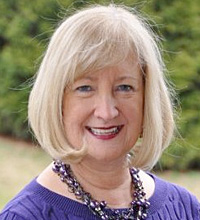 Cynthia Nalevanko, a former member of the FFI board, is an editor at SAGE Publications, where she is responsible for acquiring, developing and managing scholarly management, business and economic journals. She specializes in acquisitions, contracts, content development, strategic planning, and financial modeling. She can be reached at Cynthia.Nalevanko@sagepub.com.
Cynthia Nalevanko, a former member of the FFI board, is an editor at SAGE Publications, where she is responsible for acquiring, developing and managing scholarly management, business and economic journals. She specializes in acquisitions, contracts, content development, strategic planning, and financial modeling. She can be reached at Cynthia.Nalevanko@sagepub.com.
 Kelin Gersick is a Management Fellow at the Yale School of Organization and Management, and professor emeritus of Organizational Psychology at the California School of Professional Psychology. He is also co-founder and a senior partner of Lansberg, Gersick & Associates. An FFI Fellow and recipient of the Richard Beckhard Award, Kelin can be reached at gersick@lgassoc.com.
Kelin Gersick is a Management Fellow at the Yale School of Organization and Management, and professor emeritus of Organizational Psychology at the California School of Professional Psychology. He is also co-founder and a senior partner of Lansberg, Gersick & Associates. An FFI Fellow and recipient of the Richard Beckhard Award, Kelin can be reached at gersick@lgassoc.com.
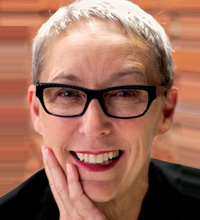 Judy Green is the president of the Family Firm Institute, a frequent commentator in the field, and the recipient of the FFI Barbara Hollander Award. She can be reached at judy@ffi.org.
Judy Green is the president of the Family Firm Institute, a frequent commentator in the field, and the recipient of the FFI Barbara Hollander Award. She can be reached at judy@ffi.org.
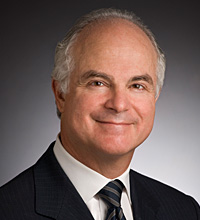 Ivan Lansberg is a founding member of FFI and an FFI Fellow. The recipient of the Richard Beckhard award, Ivan is on the faculty of the Kellogg School of Management at Northwestern and is the co-founder and a senior partner of Lansberg, Gersick & Associates. He can be reached at i-lansberg @kellogg.northwestern.edu.
Ivan Lansberg is a founding member of FFI and an FFI Fellow. The recipient of the Richard Beckhard award, Ivan is on the faculty of the Kellogg School of Management at Northwestern and is the co-founder and a senior partner of Lansberg, Gersick & Associates. He can be reached at i-lansberg @kellogg.northwestern.edu.
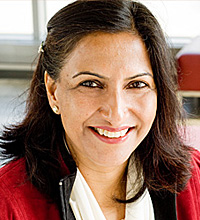 Pramodita Sharma is an FFI Fellow and the editor of the Family Business Review. She is the Sanders Professor for Family Business at the School of Business Administration, University of Vermont. A recipient of the Barbara Hollander Award, Pramodita can be reached at psharma@bsad.uvm.edu.
Pramodita Sharma is an FFI Fellow and the editor of the Family Business Review. She is the Sanders Professor for Family Business at the School of Business Administration, University of Vermont. A recipient of the Barbara Hollander Award, Pramodita can be reached at psharma@bsad.uvm.edu.




